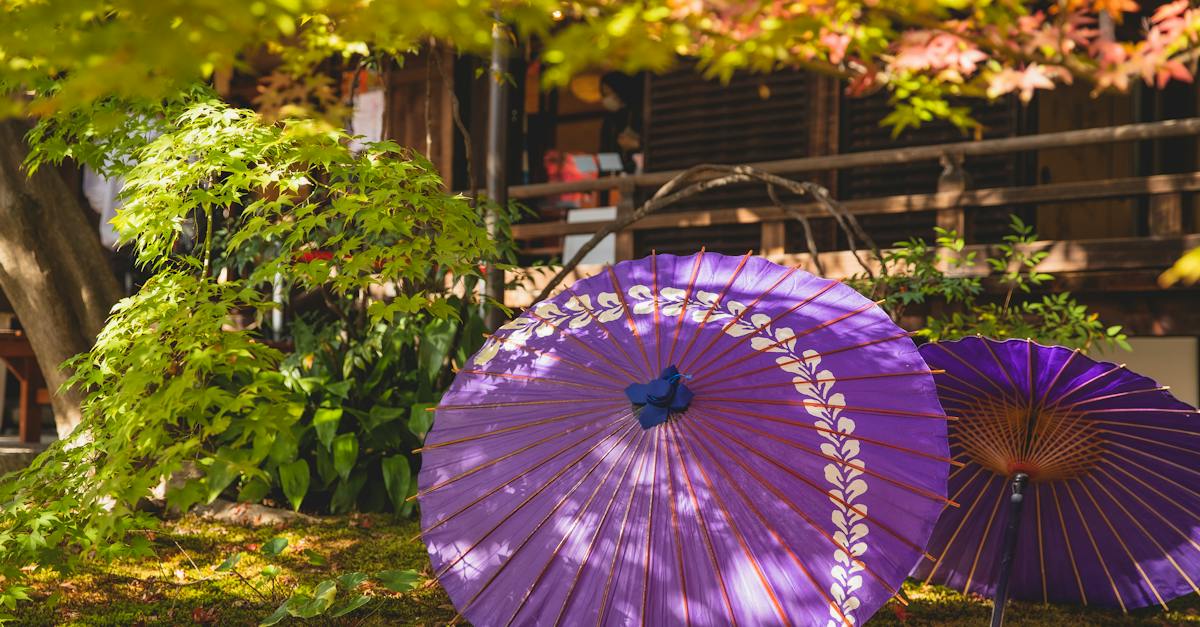Get ready to immerse yourself in the vibrant and rich culture of Japan as we dive into the exciting lineup of Japanese holidays in 2023. From centuries-old traditions to modern celebrations, Japan offers a unique and captivating experience for locals and tourists alike. In this article, we’ll explore some of the most significant holidays that will take place in the Land of the Rising Sun in the upcoming year.
With its deep-rooted traditions and strong sense of community, Japan has a calendar filled with fascinating holidays that reflect its cultural heritage. Whether you’re interested in witnessing breathtaking fireworks displays, participating in lively parades, or indulging in mouthwatering traditional cuisine, Japanese holidays offer something for everyone. In this article, we’ll highlight some of the most anticipated celebrations in 2023 and provide insights into the customs and significance behind each festivity.
Mark your calendars and join us as we embark on a journey through the enchanting world of Japanese holidays in 2023. From the iconic cherry blossoms of Hanami to the electrifying energy of Obon, get ready to discover the magic and beauty that awaits during these special occasions. So, let’s dive in and explore the vibrant tapestry of Japanese culture through the lens of its most cherished holidays in the upcoming year.
Japanese Holidays in 2023
Japan is a country renowned for its vibrant traditional culture and unique holidays. In 2023, the calendar is brimming with festivities that showcase the rich heritage of Japan. These holidays offer a glimpse into the country’s customs, beliefs, and traditional practices. From breathtaking cherry blossoms to exuberant dance festivals, there is something for everyone to experience and enjoy.
One of the most iconic and eagerly awaited events in Japan is Hanami, the cherry blossom festival. In 2023, this enchanting celebration is expected to take place in late March to early April, depending on the blooming season. It is a time when people gather under blooming cherry trees, enjoying picnics and reveling in the beauty of the delicate pink blossoms. The atmosphere is filled with joy and camaraderie as everyone marvels at the ephemeral beauty of nature.
Another significant holiday that will be celebrated in 2023 is Golden Week. This is a cluster of national holidays that give the Japanese people an extended break to relax and indulge in recreational activities. The Golden Week includes Showa Day, Constitution Memorial Day, Greenery Day, and Children’s Day. Together, these holidays create a festive atmosphere across the country, with people engaging in various cultural events, outings, and family gatherings.
For those seeking a unique and spiritual experience, the Obon festival is not to be missed. Held in August, this traditional Buddhist event honors deceased ancestors by welcoming their spirits back to the earthly realm. During this time, families gather to clean the graves of their loved ones, light lanterns, and perform dances known as Bon Odori. The streets come alive with vibrant colors, music, and the captivating sight of people dressed in traditional yukata, creating an electrifying energy that is truly mesmerizing.
Japanese holidays in 2023 offer a kaleidoscope of cultural experiences. Whether it’s witnessing the ethereal beauty of cherry blossoms, immersing oneself in the festive spirit of Golden Week, or partaking in the spiritual celebrations of Obon, there is no shortage of opportunities for travelers and locals alike to embrace and celebrate the rich traditions of Japan.
| Holiday | Date |
|---|---|
| Hanami (Cherry Blossom Festival) | Late March to early April |
| Golden Week | April 29th to May 5th |
| Obon Festival | August 13th to |
Introduction to Japanese Holidays
Japanese culture is known for its vibrant and diverse festivals and holidays, which provide a unique and immersive experience for both locals and tourists. In 2023, Japan is set to celebrate a range of holidays that showcase the country’s rich traditions, customs, and spirituality.
One of the most eagerly anticipated holidays in Japan is Hanami, the cherry blossom festival. This enchanting event typically takes place in late March to early April, when the cherry trees across the country bloom in a stunning display of pink and white flowers. During Hanami, people gather in parks and gardens, enjoying picnics under the blossoms, taking part in traditional tea ceremonies, and appreciating the ephemeral beauty of nature. It’s a truly magical time to be in Japan, as the entire country becomes blanketed in a sea of delicate petals.
Another prominent holiday in Japan is Golden Week, a cluster of national holidays that falls between late April and early May. This extended holiday period is highly cherished and eagerly awaited by the people of Japan, as well as visitors from around the world. Golden Week encompasses several important holidays, including Shōwa Day, Constitution Memorial Day, Greenery Day, and Children’s Day. This week-long break provides ample opportunities for people to travel, explore different regions of the country, and immerse themselves in the local culture. Expect bustling streets, lively festivities, and an abundance of delicious food during this time.
In August, the Obon festival takes center stage, honoring deceased ancestors as well as commemorating their spirits. This festival allows families to come together and pay their respects through various rituals and traditions. It typically involves visiting ancestral graves, presenting offerings, and performing traditional folk dances known as Bon Odori. The Obon festival is not only a time of reflection and remembrance but also a celebration of life, with vibrant events and fireworks illuminating the night sky.
Significance of Japanese Holidays
Japanese holidays hold great significance in the country’s culture and tradition. These holidays are not just mere days off from work, but rather they serve as occasions for the Japanese people to come together, celebrate, and honor various aspects of their heritage. The year 2023 presents a wonderful opportunity to experience the richness and vibrancy of Japanese holidays.
Hanami, the cherry blossom festival, is one of the most anticipated and cherished holidays in Japan. Taking place in late March to early April, Hanami marks the arrival of spring and the blooming of cherry blossoms across the country. During this time, parks, gardens, and streets are adorned with delicate pink flowers, creating a mesmerizing spectacle. People gather with family, friends, and colleagues to have picnics, enjoy the beauty of the cherry blossoms, and partake in traditional festivities. Hanami is a time of joy, appreciation for nature, and community bonding.
Another notable holiday in Japan is Golden Week, which is a cluster of national holidays that falls between late April and early May. It is a week-long break that allows people to travel and immerse themselves in the local culture. Golden Week includes holidays such as Showa Day, Constitution Memorial Day, Greenery Day, and Children’s Day. Many Japanese take advantage of this extended break to explore different regions of the country, visit historical landmarks, and participate in special events and parades. It is an ideal time to witness the diversity and uniqueness of Japan’s traditions and customs.
In August, the Obon festival takes place, offering families a chance to come together to honor and pay respect to their deceased ancestors. The festival is a blend of solemn ceremonies and lively celebrations. It is believed that during Obon, ancestral spirits return to visit their living relatives. To welcome and appease these spirits, households set up altars and offer food and incense. Lanterns are also lit and placed on rivers or inside homes to guide the spirits back to the afterlife. Alongside these rituals, there are vibrant Obon dances, parades, and fireworks displays that showcase the joyous spirit of the festival.
Hanami: Celebrating the Cherry Blossom Season
The cherry blossom season, also known as Hanami in Japan, is a highly anticipated event that takes place in late March to early April. This colorful and enchanting festival celebrates the beauty and ephemeral nature of cherry blossoms, which bloom for only a short period each year.
During Hanami, people from all walks of life come together to witness the breathtaking display of cherry blossoms. They flock to parks, gardens, and other scenic spots where these delicate flowers adorn the landscape. It’s a time when the entire country is transformed into a vibrant sea of pink and white.
The significance of Hanami goes beyond admiring the beauty of cherry blossoms. It is a celebration of joy, appreciation for nature, and an opportunity for community bonding. Families and friends gather under the cherry blossom trees, enjoying picnics and engaging in lively conversations. There is laughter, music, and the sound of traditional Japanese instruments filling the air.
Hanami also provides a chance to immerse oneself in Japan’s rich cultural heritage. Traditional performances, such as tea ceremonies and dance shows, take place during this festive season. Visitors get to witness the diversity and uniqueness of Japan’s traditions and customs, adding depth to their experience.
It’s important to note that the cherry blossom season is heavily influenced by weather conditions. The timing of Hanami can vary from year to year, depending on when the cherry blossoms reach their peak bloom. To ensure you don’t miss this spectacular event, it’s advisable to stay updated on the latest predictions and plan your visit accordingly.
Without a doubt, Hanami is a celebration that perfectly encapsulates the essence of Japanese culture. It’s a time of reflection, appreciation, and a reminder of the beauty found in fleeting moments. Whether you’re a visitor or a local, experiencing the cherry blossom season is an unforgettable journey into the heart of Japan.
Obon: Honoring Ancestors and the Spirits of the Departed
Obon is a significant Japanese holiday that takes place in the summer and is deeply rooted in ancestral and spiritual traditions. It is a time when families come together to honor their ancestors and pay respects to the spirits of the departed. Obon is celebrated with various customs and rituals that allow people to connect with their past and maintain a strong bond with their ancestors.
During Obon, it is believed that the spirits of the departed return to the earthly realm to visit their living relatives. To welcome them, households set up altars with ancestral tablets and offer food, incense, and water. The water is thought to quench the thirst of the spirits after their long journey. Lanterns are also lit to guide the spirits back home and to bring light into the lives of the living.
One of the most well-known traditions during Obon is the Bon Odori (Bon dance). This traditional dance is performed in various communities and features a lively and festive atmosphere. People gather in yukatas, traditional Japanese summer attire, and dance to the rhythm of traditional music. The Bon Odori varies from region to region, with different dances and songs specific to each locality.
Another important aspect of Obon is the custom of visiting family graves. Known as Ohakamairi, this practice involves cleaning and tidying the gravesites, offering flowers, and paying respects to the ancestors. It is believed that by doing so, the living can ensure the well-being and happiness of their departed loved ones in the afterlife.
The duration of Obon varies in different parts of Japan, but it generally lasts for several days. It is a time when families come together and often travel to their hometowns to reunite with relatives and participate in the various rituals and festivities. The atmosphere during Obon is one of reverence and joy, as people come together to celebrate the lives and memories of their ancestors.
Overall, Obon is a cherished holiday in Japan, filled with profound respect and spirituality. It offers a unique opportunity to honor and remember ancestors, fostering a sense of continuity and connection with the past. Through its traditions and customs, Obon provides a meaningful way for families to express their gratitude and love to those who came before them, ensuring that their memory lives on.
Festival of Shichi-Go-San: Celebrating Rites of Passage
The Festival of Shichi-Go-San is a traditional Japanese holiday that celebrates the coming of age for children. It is held annually on November 15th, and is marked by special ceremonies and festivities.
During Shichi-Go-San, boys who have turned three and five years old, and girls who have turned three and seven years old, are dressed in traditional attire and taken to local shrines for blessings. The parents and family members accompany the children, offering prayers for their health, happiness, and future success in life.
The origins of Shichi-Go-San can be traced back to the Heian period (794-1185), when children in noble families would celebrate their passage into childhood at the ages of three, five, and seven. Over time, the tradition spread to commoners as well, and it became a widely observed holiday throughout Japan.
One of the highlights of Shichi-Go-San is the “Chitose-ame” ceremony, where the children are given long, thin sticks of candy called “Chitose-ame” which symbolize good health and longevity. The candy is often brightly colored and wrapped in a bag with images of cranes and turtles, which are considered symbols of longevity in Japanese culture.
In addition to the shrine visit and candy ceremony, some families also take the opportunity to have professional photographs taken of their children in their traditional attire. These photographs serve as lasting memories and are often displayed in the family’s home or given to relatives as gifts.
Shichi-Go-San is not only a celebration of a child’s growth and milestones, but also a time for families to come together and express gratitude for their blessings. It is a day filled with joy, hope, and excitement as children take their first steps into a new stage of life.
The Festival of Shichi-Go-San is a cherished and significant holiday in Japan, highlighting the importance of family and the celebration of childhood. It is a reminder to appreciate the growth and development of children as they journey towards adulthood.
Setsubun: Driving Away Evil Spirits
Setsubun is an important holiday in Japan celebrated on February 3rd. It marks the beginning of spring according to the traditional lunar calendar. The word “Setsubun” literally means “seasonal division,” and it is believed to ward off evil spirits and bring good fortune for the coming year.
One of the most popular customs associated with Setsubun is the “Mamemaki” tradition. During this ritual, people throw roasted soybeans called “fukumame” or “fortune beans” at home or in temples and shrines while shouting “Oni wa soto, fuku wa uchi” which means “Demons out, good luck in.” This act symbolizes driving away evil spirits and inviting good luck into their lives. It is believed that the sound of beans hitting the floor scares away the demons.
Another common practice during Setsubun is the wearing of a demon mask called “Oni,” usually made of paper or wood. An adult or someone dressed as an Oni would go around the house or neighborhood, pretending to be a demon, while others throw beans at them. This act represents the expulsion of bad luck and the cleansing of homes from negative energies.
Setsubun is not only a time for banishing evil spirits but also for welcoming good fortune. Many people visit temples or shrines to participate in special ceremonies and receive “Ehomaki,” a type of sushi roll. It is believed that by facing the lucky direction of the year and eating the entire roll without speaking, one can make a wish and receive blessings.
Overall, Setsubun is a festive holiday that brings communities together to celebrate the arrival of spring and drive away negative influences. It showcases the importance of purification, warding off evil spirits, and embracing good luck for the year ahead.
Mentioning Setsubun in the ongoing article about Japanese holidays adds to the richness and diversity of their traditions and customs. Moving forward, the article can continue to explore additional holidays and festivities that make Japan a culturally vibrant nation all year round.
Conclusion
The article has provided an overview of two significant Japanese holidays in 2023: the Festival of Shichi-Go-San and Setsubun. Shichi-Go-San is a cherished tradition that celebrates children reaching a certain age, while Setsubun marks the beginning of spring and is believed to bring good fortune for the year ahead. Both holidays are deeply rooted in Japanese culture and are celebrated with various customs and traditions.
During Shichi-Go-San, families come together to dress up their children and visit shrines to pray for their well-being and future success. Setsubun, on the other hand, involves the exciting Mamemaki tradition, where people throw roasted soybeans to drive away evil spirits. Additionally, the wearing of demon masks adds to the festive atmosphere.
These holidays not only hold cultural significance but also serve as opportunities for communities to come together and celebrate. Whether it’s witnessing the joy of children during Shichi-Go-San or participating in the lively Setsubun festivities, these holidays offer a glimpse into the rich traditions and customs of Japan.
In 2023, those visiting Japan during these holidays can immerse themselves in the vibrant celebrations and experience the warmth and hospitality of the Japanese people. So, mark your calendars and get ready to embrace the unique cultural experiences that await you during the Festival of Shichi-Go-San and Setsubun in Japan.
Frequently Asked Questions
Q: What is Shichi-Go-San?
A: Shichi-Go-San is a traditional Japanese holiday that celebrates the coming of age for children. It is held annually on November 15th.
Q: What is Setsubun?
A: Setsubun is an important Japanese holiday celebrated on February 3rd. It marks the beginning of spring and is believed to ward off evil spirits and bring good fortune for the coming year.
Q: How is Setsubun celebrated?
A: Setsubun is celebrated through customs such as the Mamemaki tradition, where people throw roasted soybeans to drive away evil spirits, and the wearing of demon masks. People also visit temples or shrines to participate in special ceremonies and receive Ehomaki, a type of sushi roll.
Q: What is the significance of Setsubun?
A: Setsubun is a festive holiday that brings communities together to celebrate the arrival of spring and drive away negative influences. It is an opportunity to bond with family and friends and enjoy the traditions and customs associated with the holiday.
Q: Are there any other Japanese holidays worth knowing about?
A: Yes, there are many other Japanese holidays that are worth knowing about. Some examples include Golden Week, Obon, and New Year. These holidays are rich in cultural significance and are celebrated with various customs and traditions.




